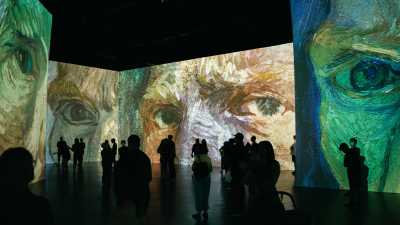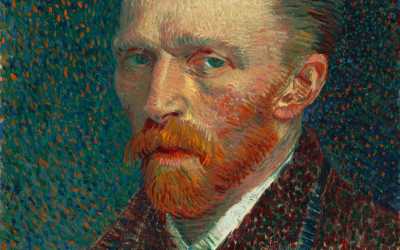 Self-portrait, Spring 1887 Detail.
Self-portrait, Spring 1887 Detail.
Vincent van Gogh, Public domain, via Wikimedia Commons
10 curious facts about Vincent Van Gogh that you may not have known
1.- A prolific letter writer
Van Gogh was a prolific letter writer, and it's estimated that he wrote around 800 letters in his lifetime. Many of these letters were addressed to his younger brother, Theo and they provide valuable insight into Van Gogh's life and artistic process. Van Gogh's letters were also a source of financial support for him, as Theo worked as an art dealer and often sent him money and art supplies.
2.- A religious man
Van Gogh was a deeply religious man and initially wanted to become a pastor. He worked as a missionary in Belgium for a time but eventually gave up on his religious aspirations and turned to art. Van Gogh's religious beliefs also influenced his artistic style as he saw art as a way of bringing people closer to God. He once wrote, "I am not an atheist and I do not think I can be called a pantheist. We are looking for something outside of ourselves, something that gives meaning to our lives."
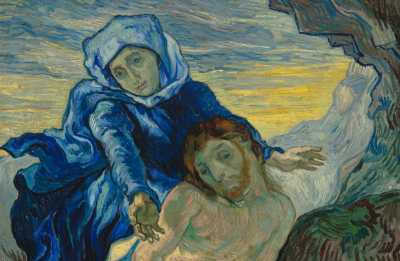 Pietà (after Delacroix) Detail.
Pietà (after Delacroix) Detail.
Vincent van Gogh, Public domain, via Wikimedia Commons
3.- Van Gogh's Starry Night
Van Gogh's famous painting, Starry Night, was painted while he was in a mental asylum in Saint-Rémy-de-Provence France. He created the painting from memory, as he was not allowed to paint outside. Starry Night was not well received during Van Gogh's lifetime, but it has since become one of the most recognized and celebrated works of art in the world. Today, it is housed in the Museum of Modern Art in New York City.
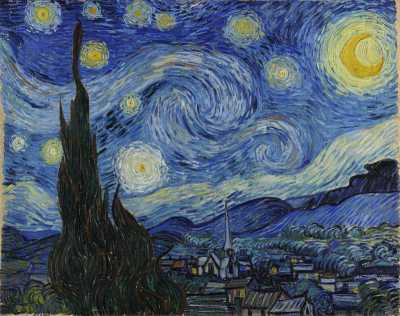 Starry Night Vincent van Gogh, Public domain, via Wikimedia Commons
Starry Night Vincent van Gogh, Public domain, via Wikimedia Commons
4.- Van Gogh's mental and physical problems
Van Gogh's mental health struggles are well-known, but he also had physical health problems. He suffered from epilepsy and a range of other medical conditions that affected his life and work. One of Van Gogh's most well-known medical conditions was his propensity for seizures, which were often brought on by stress and anxiety. He once described his seizures as feeling like a "thunderstorm in his head" and they had a profound impact on his life and his ability to create art.
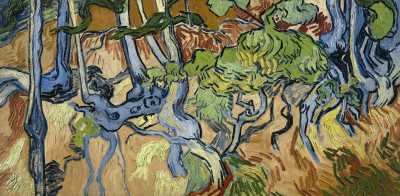 Tree Roots Vincent van Gogh's last work, finished just a few hours before he died
Tree Roots Vincent van Gogh's last work, finished just a few hours before he died
Public domain, via Wikimedia Commons
5.- Van Gogh, an avid reader
Van Gogh was an avid reader and was particularly fond of the works of Charles Dickens and George Eliot. In addition to reading, Van Gogh was also a skilled linguist who was fluent in Dutch, French German, and English. He used his language skills to communicate with other artists and writers, and to read the works of authors who were not widely available in translation at the time.
6.- Theo, the art dealer
Van Gogh's brother Theo, was an art dealer and played a key role in promoting his brother's work. Theo supported Van Gogh financially and helped to connect him with other artists and collectors. Theo's unwavering support of Van Gogh's work continued even after his death, as he worked to promote his brother's legacy and ensure that his paintings were displayed in galleries and museums around the world.
7.- Strange eating habits
Vincent Van Gogh's eating habits were quite peculiar - he was known to eat his paint, drink turpentine and even chew on his brushes! He also had a strong affinity for bread and coffee, which he believed helped him work better. Wait... eat the paint? Yes, it is believed that Vincent Van Gogh ate his paint, although there is some debate about the extent to which he did so. Some reports suggest that he may have occasionally nibbled at the paint straight from the tube while others say that he mixed paint with his food. This information comes from various sources, including Van Gogh's letters and the recollections of those who knew him.
8.- A fan of Japanese art
Van Gogh was a fan of Japanese art and collected prints and books on the subject. He was inspired by the bold colors and graphic style of Japanese prints and this influence can be seen in some of his later works. Van Gogh's love of Japanese art was so great that he began to incorporate elements of Japanese style into his own paintings. He was particularly interested in the concept of ukiyo-e which refers to pictures of the floating world and often depicts scenes from everyday life.
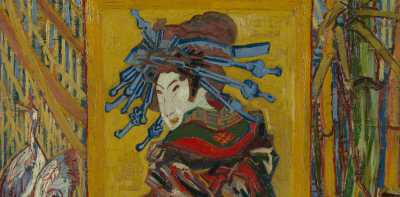 Courtesan: after Eisen Detail.
Courtesan: after Eisen Detail.
Vincent van Gogh, Public domain, via Wikimedia Commons
9.- Van Gogh and Impressionism.
Van Gogh was deeply inspired by the Impressionists particularly Claude Monet and Camille Pissarro. He incorporated many of their techniques into his own work such as using broken brushstrokes and bright colors. Van Gogh's admiration for the Impressionists was not limited to their techniques. He also corresponded with Pissarro and admired Monet's paintings so much that he tried to replicate some of them but Van Gogh's use of vibrant colors and bold brushstrokes set him apart from other Post-Impressionist painters.
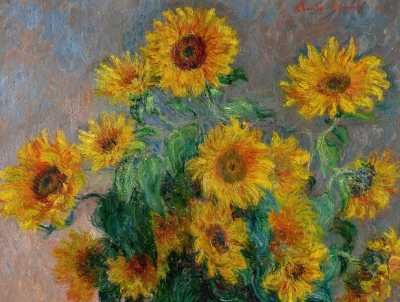 Bouquet of Sunflowers (Detail) Claude Monet, Public domain, via Wikimedia Commons
Bouquet of Sunflowers (Detail) Claude Monet, Public domain, via Wikimedia Commons
10.- Famous after death
Van Gogh only sold one painting during his lifetime, and it was to his brother's friend and fellow artist Anton Mauve. The painting, titled The Red Vineyard, was sold for 400 francs. Despite only selling one painting in his lifetime, Van Gogh's work became highly sought after after his death. In 1987, his painting Irises sold for a then-record price of $53.9 million at an auction. And just 3 years later, in 1990, the "Portrait of Dr. Gachet" broke all records again and was auctioned for $82.5 million.
